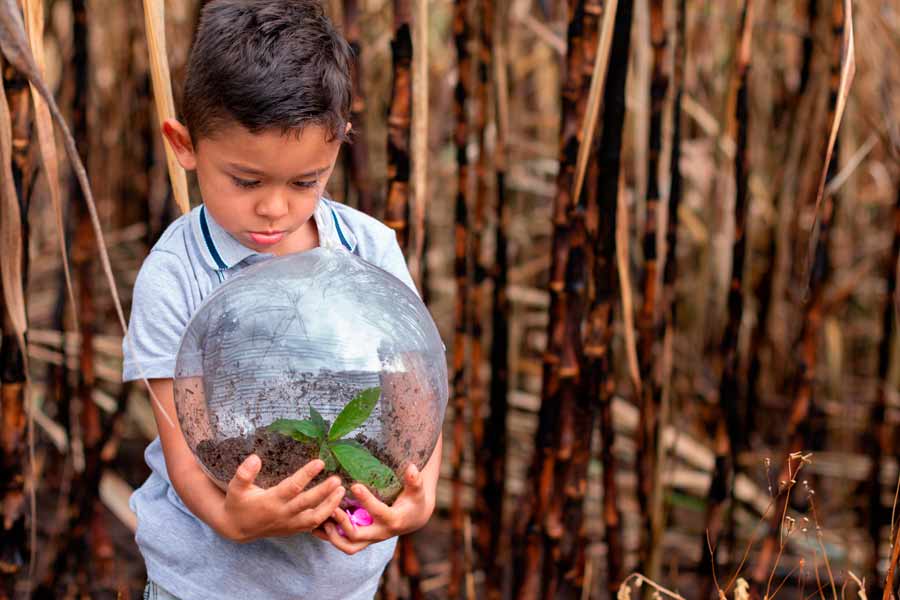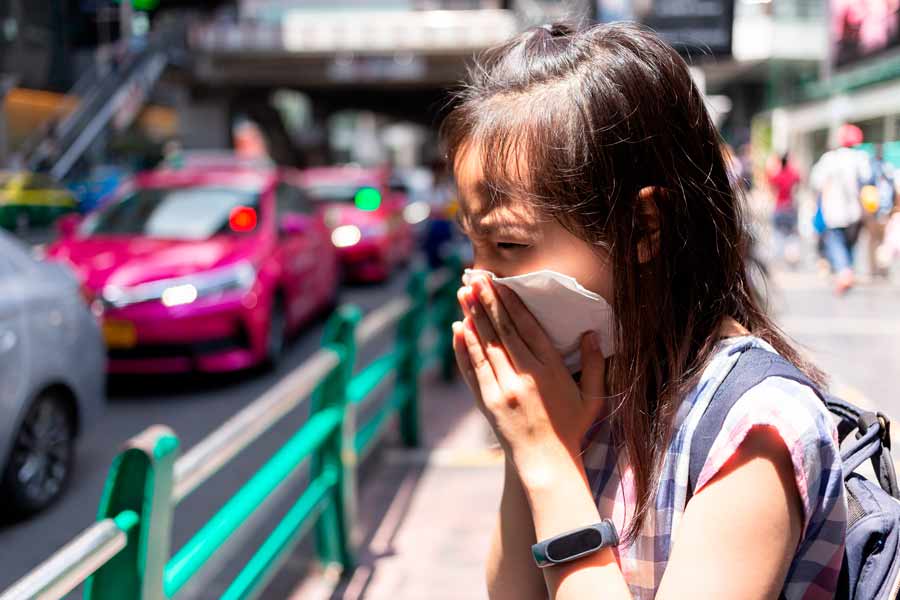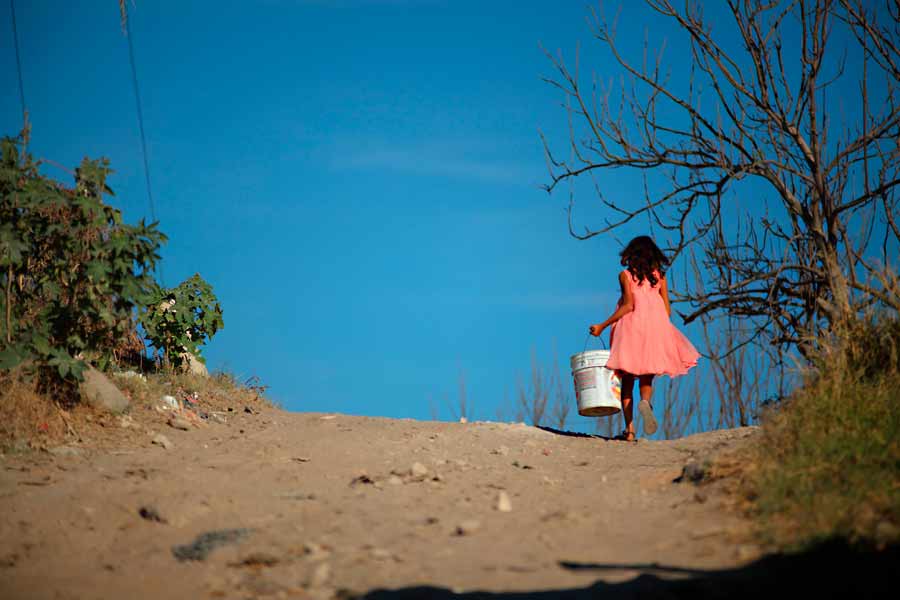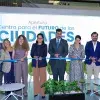What factors affect the full development of children up to 5 years of age? How do urban and environmental conditions impact early childhood?
During early childhood, it is vitally important that there are conditions for growing up in a healthy environment and in cities where boys and girls are taken into account, said Lorena Guillé, Director of the FEMSA Foundation.
“There’s a concern and sense of urgency about what we’re seeing in the world and the need to investigate, explore, and propose ways we can ensure that our children of this and the next generations aspire to develop themselves to their fullest potential,” said Guillé.
This was part of a workshop organized by Tec de Monterrey’s Center for the Future of Cities and Center for Early Childhood and the FEMSA Foundation, with the support of the Capita organization, to reflect on the challenges cities face in terms of climate change and early childhood.
“The greatest threat to healthy human development in the early years of life is likely to come from hazards related to climate change in a rapidly urbanizing world,” said Joe Waters, co-founder and CEO of Capita.

Challenges to children’s full development
For the FEMSA Foundation Director, it is necessary to address and seek solutions to two major challenges: children’s full development starting at birth and living in a healthy environment.
To this end, it is important to put children at the center of decision-making, said Guillé, adding that this also implies paying attention to the spaces where children and their families develop.
“These spaces greatly influence and determine their health, development, and behavior,” she said.
They would also seek to address the impact that climate change is having on children, whose health, development, and prosperity are affected.
“According to the Children’s Climate Risk Index, 850 million children –1 in 3 children worldwide– live in areas where there are at least four overlapping climate and environmental shocks, such as cyclones, water shortages, and heat waves,” she said.
“Also, according to the Global Designing Cities Initiative, about 127,000 children under the age of 5 die every year from air pollution,” she added.
At the workshop, which was attended by some 50 experts in urban and city planning, Guillé pointed out that the collaboration of stakeholders and representatives from the public and private sectors, society, and academia is necessary in order to address these challenges.
“Let’s make our children’s situation, the context of our cities, their design, their policies, and the circumstances of our planet evolve in the right direction, and let’s together be ambassadors of prosperity for the next generations,” said Guillé.

Child-centered actions
“In 40 years, children will live in a world shaped by our decisions today,” said Luis Duarte, a Tec graduate and partner at international philanthropic investment firm Imaginable Futures.
For Duarte, the destiny of cities and the future of children can be changed through well-designed actions that take climate change into account and put early childhood needs at the center.
“Public policies, programs, and practices focused on caring for young children can immediately increase children’s resilience and their ability to adapt to the effects of climate change and other emergencies,” he said.
Climate resilience can be increased through these actions, but they can also help sustainable development for society in the medium- and long-term, Duarte said.
“We need to design and implement strategies that work and are sustainable for today, but that also work in the medium- and long-term. It’s important that we solve fundamental and systemic problems. There’s a dichotomy between what’s urgent and what’s important.”
“Well-designed actions that take into account climate change and put the needs of young children at the center are important solutions and a way to confront both,” Duarte said.
For the Tec graduate, who has worked on social programs for early childhood, actions carried out that do not focus on the care of children will probably serve this generation, but not the following generations.
Duarte noted that it is necessary to imagine, invent, and investigate possible actions and approaches in order for cities to make young children’s specific needs the focus of their strategic climate change policies.
This can ensure that children thrive today and can also build a solid foundation for a sustainable future.
“The greatest threat to healthy human development in the early years of life is likely to come from hazards related to climate change.” – Joe Waters
Cities’ environmental plans for early childhood
For Duarte, in addition to the challenges and risks of cities, such as inequality, poverty, violence, and lack of employment opportunities, there is exposure to extreme climate change.
Given these challenges, he pointed out the need for cities to have climate action plans and planning focused on children living in a world with significantly rising temperatures.
Emerging issues
Duarte listed three emerging issues that are being considered in the plans of the world’s most populated cities in order to address early childhood through environmental actions:
- Plans that recognize children as a vulnerable population with different health and quality of life issues, which also promote urban ecology, biodiversity, and accessibility to open spaces for early childhood, thus improving health and habitability.
- Actions to reduce the health effects of pollution and climate change on vulnerable populations, such as an emphasis on clean cooking and heat wave relief.
- Infrastructure projects to provide access to clean water and public sanitation. Functional public infrastructure in cities, informal urban settlements, and slums is vital to improving children’s quality of life.
To reflect on this, the Tec graduate shared a quote from UNICEF that says: “[Children] have their whole life ahead of them – any deprivation as a result of climate and environmental degradation at a young age can result in a lifetime of lost opportunity.”

Lack of services and infrastructure in city outskirts
José Antonio Torre, Director of the Center for the Future of Cities, and Nélida Escobedo, a researcher at the center and professor at the Tec’s School of Architecture, Art, and Design, reflected on how children’s development is affected by families living on the outskirts of cities.
The director pointed out that although more and more people live in cities, the growth of urbanized areas and the high cost of housing in urban centers forces families to settle in surrounding areas where there is no adequate infrastructure.
“It’s a dynamic in which city centers, with the infrastructure of the original city, are left with no population, and people are being pushed out into the surrounding environments. It’s a phenomenon that’s occurring in many cities in Mexico and the world,” Torre said.
“We’re pushing young families out to the periphery, which is where children are growing up in environments with a whole series of deficits in terms of equipment and services,” the professor said.
For Escobedo, this urban model not only directly affects families’ access to basic services, such as drinking water, drainage, electricity, and garbage collection, but also has environmental implications, such as air and water quality.
“Infants are more vulnerable to this system. Young children’s physiological needs require breathing more oxygen, and they’re more vulnerable to polluted air. There are few or no quality public spaces; there are no playgrounds,” she explained.
Considering that this model reduces people’s quality of life in every sense, Torre urged the creation of actions to counteract this dynamic, which he sees as a structural problem that is accelerating, and more efficient city models.
The Center for the Future of Cities is a center for thought and action at Tecnológico de Monterrey focused on the planning and transformation of cities into sustainable, humane, and prosperous environments.
The Center is aligned with Tec de Monterrey’s fourth distinguishing feature in its strategic vision for 2030, which consists of Tec de Monterrey being a driver in the transformation of cities and communities.
Early Childhood Center announced
Tecnológico de Monterrey and FEMSA Foundation announced the creation of the Early Childhood Center, with the purpose of using science to address major inequalities of opportunities during the first years of life.
It will do this through four main areas: Researcher, Facilitator, Trainer, and Communicator.
Learn more about this center here.
ALSO READ:





